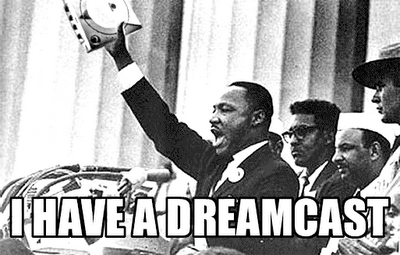Romulus
Member
Not to say it didn't have some good looking games or it was weak, but I feel like the Dreamcast's technical specs were mostly a product of the timing of its launch and more developer friendly design. It came out during strange combo: a time when 3D processors were moving by leaps and bounds and the only close competition or reference anyone had was the aging N64, which was a memory starved piece of hardware. Not to mention, the N64 was ultra-difficult to develop games and the Dreamcast wasn't. So, the N64 offered nothing in terms of competition at all.
Add to that, the PS2 was the next console after the Dreamcast, and was considered one of the most difficult consoles to develop for of all time.
In summary, I felt like the Dreamcast was in a great spot to show off its hardware mostly because it had no competition and it was easy to develop for. They sprang a "next gen" console early. It didn't work out for them, but it seems people think it was some anomaly powerhouse system, which imo it wasn't and that's more a product of its launch timing. But the Dreamcast wasn't weak either, and it also had some interesting ideas and forward-thinking.
Add to that, the PS2 was the next console after the Dreamcast, and was considered one of the most difficult consoles to develop for of all time.
In summary, I felt like the Dreamcast was in a great spot to show off its hardware mostly because it had no competition and it was easy to develop for. They sprang a "next gen" console early. It didn't work out for them, but it seems people think it was some anomaly powerhouse system, which imo it wasn't and that's more a product of its launch timing. But the Dreamcast wasn't weak either, and it also had some interesting ideas and forward-thinking.
Last edited:


